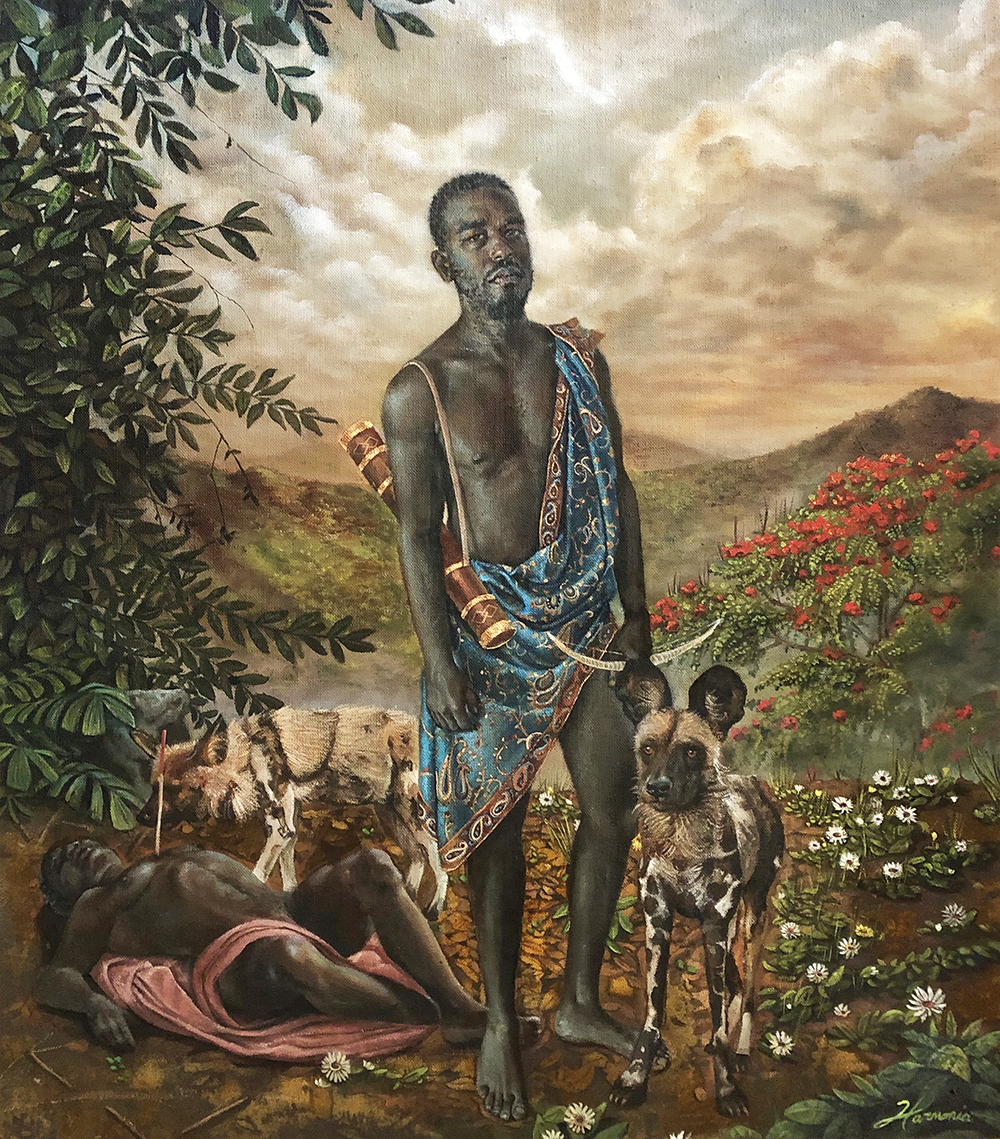At a young age, Harmonia Rosales fell in love with the Renaissance masters who wove tales from Greco-Roman mythology and Christianity in their paintings. “They tell a full story, corner to corner, like a children’s book where you don’t have to really have the text,” she says. “You can almost look at the image and know this is what happened. When I was younger, though, I never looked at the image and thought, ‘Okay, this is the story of the Great Flood,’ or what have you. I would make up my own stories. It wasn’t until my daughter that I then became more aware of what was missing. When I had my daughter, it was like I was reborn almost, with these really innocent eyes. And when I took her to see these beautiful paintings that I fell in love with, she didn’t fall in love with them. … She was like, ‘They don’t look like me.’ It just hit me that I didn’t want her to feel like her hair wasn’t beautiful, her skin wasn’t beautiful.”
And so Rosales took to the canvas to give her daughter the representation she was missing in the Western Renaissance paintings that have been celebrated for centuries. As an Afro-Cuban American, she turned to the Lucumí religion of her ancestors. “These gods [of Greek and Roman mythology] are very similar to the orishas I grew up with all my life, but took for granted because I grew up with them,” she says. “There’s no real images I can find on the internet, and so I was like, ‘Let me tell a story, where it’s easy for the masses to understand, but also add in our history.’ And then when I say our history it’s from people from the African diaspora, the Atlantic slave trade, our life, and how we survived through the gods and how the gods survived.”
At first, her peers discouraged her from painting these stories centered around African and Black figures in the Renaissance style. Her advisors told her she wouldn’t be able to sell them, but Rosales didn’t care. This work made her happy. “To see us in there, our ancestors, our history in a format where it’s just as time-consuming, looks just like the Renaissance paintings — the priceless paintings, the most beautiful paintings of the world, can’t touch ’em, can’t buy ’em — I wanted to do that in order to empower us and see our history in the same light,” she says. “Inclusion, it’s all about inclusion. Seeing this is what I want for my children.”
Rosales intended these pieces to be public-facing, wanting to reach as broad of an audience as possible just as the Renaissance masters she reimagines and reinvents have achieved. And thanks to the Brooks, she is one step closer to that goal as her first solo museum exhibition, outside of her home state California, opened last week. Titled “Master Narrative,” the exhibition contains over 20 breathtaking paintings completed over the past few years. The exhibit will be on display through June 25th, with museum programming throughout its run. Learn more at brooksmuseum.org.
“Harmonia Rosales: Master Narrative,” Memphis Brooks Museum of Art, on display Through June 25th.
“Creolization in the Work of Harmonia Rosales” Lecture, Memphis Brooks Museum of Art, Wednesday, March 22, 6 p.m.
